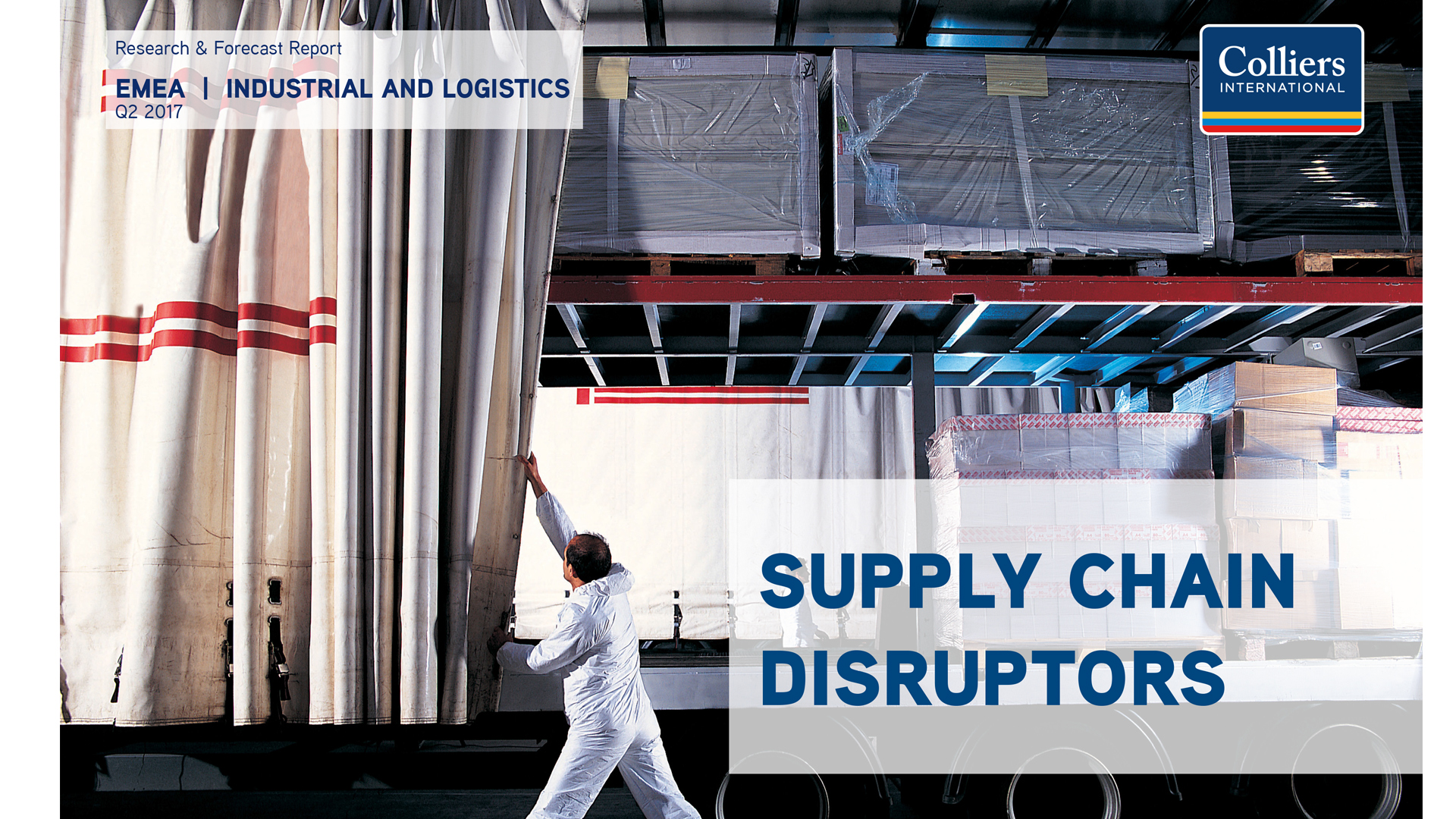
Transport & Logistic Exhibition in Munich: Who Are Today’s European Logistics Movers and Shakers?
The growth of e-commerce, technology change and other cyclical and structural factors, like the crisis of the shipping industry, are reshaping supply chains and have major implications for industrial property portfolios/markets according to a new research from Colliers International.
Highlights from ‘Supply Chain Disruptors: EMEA Q2 2017’ include:
Global cross-border e-commerce:
If e-commerce keeps growing at the current rate, it could reach $5.4 trillion globally by 2020, more than the UK and France’s GDP combined. There are positive growth impacts for the logistics industry as a result of the growth in e-commerce. In turn, this is driving the logistics real estate market, creating an ever growing need for warehousing space/logistics services for the increasing number of parcels.
Global cross-border e-commerce in particular is on the rise, with 45% of on-line shoppers expected to buy products from other countries by 2020. This represents a four-fold increase in sales compared to 2014. Thanks to e-commerce giants like Amazon and Alibaba, smaller merchants are increasingly involved in this global trade. This creates and additonal layer of demand for logistics capacity/space and requires a different logistics approach to handle an increasingly diverse range of products and smaller batches of it.
Who are the key three movers and shakers for the logistics industry?
- The e-tailers taking on logistics:
Global e-commerce players, such as Amazon and Alibaba, are increasingly involved in the logistics side of their business and invested extensively in logistics to drive their business.
Amazon offers its marketplace sellers outsourced logistics and shipping and is seeking greater control of its delivery network to reduce cost/improve speed of deliveries. In the future it could start offering logistics services to third parties, taking potentially take business from its logistics partners: Amazon accounts for an estimated 5% and 4% of UPS and DHL’s revenues, respectively.
Bruno Berretta, Associate Director, EMEA Research – Industrial & Logistics, Colliers International explains: “Unlike Amazon, Alibaba does not invest in logistics and warehousing directly and relies mostly on logistics partners to deliver goods. Although Alibaba does not pose a direct threat to delivery companies such as UPS, its use of technology is impacting on part of the supply chain. Alibaba’s “One Touch” on-line platform offers small/medium merchants a series of export-related services including customs clearance and logistics, and now shipping, bypassing third parties previously involved in this process”.
- New strategies of container shipping companies
Due to the delivery of the latest generation mega-container ships and weaker global trade, container shipping companies have responded by forming alliances with competitors (M&A) and invest in technology and automation, an area where container shipping companies have lagged other industries. Some carriers are looking to diversify away from sole sea-shipping. Maersk, the world’s largest container ship fleet operator, for example is looking at logistics and inland transportation.This could cause some reshuffling within industrial portfolios but also drive new investment in I&L space.
- Challenges for freight forwarders
This market segment is under severe competitive pressure for two main reasons:(1) The impact of technology, making middleman redundant (2) the challenges posed by e-commerce companies and logistics start-ups. Freight forwarders respond to them by digi¬talising processes (such as freight booking and monitoring) to make them more efficient and transparent. Other services include road transport, parcel/postal courier services and contract logistics. Parcel delivery business directly benefits from e-commerce so logistics companies are putting more resources to this business segment.
